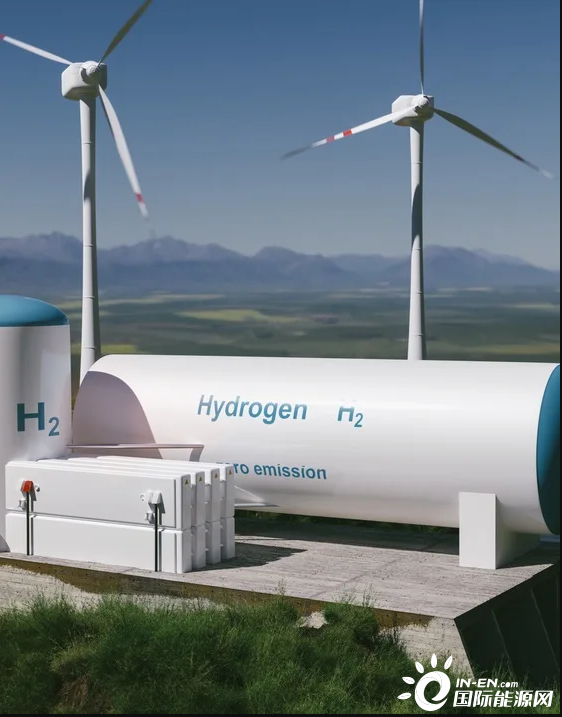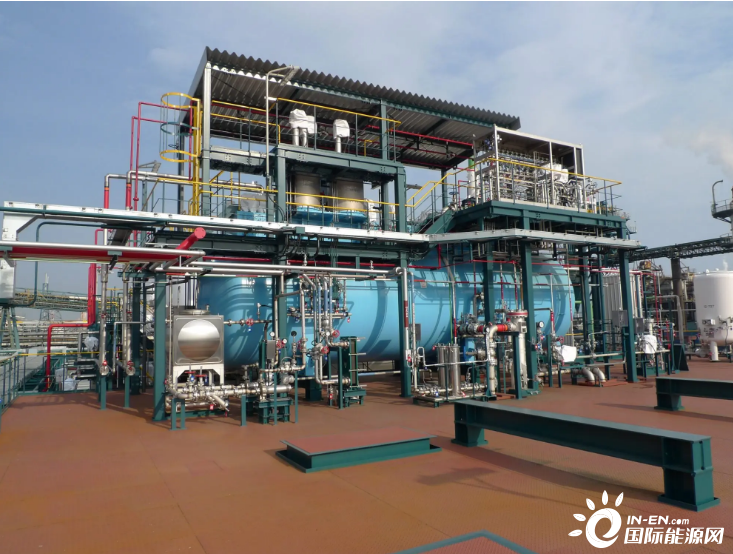

With the global energy transformation and upgrading, green hydrogen technology is becoming more and more mature, and hydrogen energy development market is broad. It is worth mentioning that, as an important force in the global supply chain, Chinese manufacturing has attracted many international energy companies to invest in China.
Recently, Australian renewable energy company Climate Impact Corporation brought the world's first 10GW green hydrogen project GreenSpring to China, planning to invest 8 billion US dollars, seeking to land the Australia-Japan-China industrial chain.
CIC is a major renewable energy project development, investment and operational management company with offices in Australia, Hong Kong, Singapore and Beijing. The Green Spring project under development is located in Tenant Creek, Northern Territory, Australia, with one of the best sunshine and geographical conditions in the world, covering an area of 200 square kilometers, which is one of the largest and fastest progressing off-grid photovoltaic green hydrogen production projects in Australia. According to reports, the overall scale of the project is 10GW, the annual production capacity is 400,000 tons of hydrogen, the life cycle is 35 years, and the carbon index will be more than 600 million tons.
The Green Spring project has been in the hydrogen energy field for more than three years, and has now entered the final stage. A few days ago, CIC Chairman David Green revealed in an interview with the media that the main purpose of the delegation to China is to find upstream equipment suppliers with large-scale supply capacity for the Green Spring project, and ultimately achieve joint production capacity in Australia.
Construct hydrogen green triangle
As the world's first 10GW green hydrogen project, Green Spring uses off-grid photovoltaic power generation, captures water from the atmosphere, electrolytic hydrogen production, and synthesizes downstream products including methanol, electric fuel (SAF sustainable jet fuel) and synthetic ammonia and other all-green products. In addition to domestic use, production capacity will mainly be supplied to foreign markets.

According to Yang Haofeng, CEO of CIC, Green Spring is positioned as the world's largest open hydrogen energy platform and will open up the renewable energy industry chain relying on Australia, Japan and South Korea and China. Among them, green hydrogen resources come from Australia, downstream demand comes from Japan and South Korea, and equipment and other productivity comes from China.
According to the levelised cost of hydrogen published by the International Renewable Energy Agency, Australia has the lowest cost of hydrogen production in the world. On the one hand, Australia has the world's highest solar radiation intensity and extremely high sunshine duration, more than 3,000 hours of effective light can be used throughout the year, which is conducive to photovoltaic hydrogen production; On the other hand, adjacent to major green hydrogen buyers such as Japan and South Korea, the shortest distance and convenient transportation, so that it has a transportation cost advantage.
In 2023, Australia also announced that it will allocate about $1.4 billion to support renewable hydrogen projects in a bid to propel it to become an exporter of hydrogen resources. Thanks to its cost advantages and stable production environment, Australia is seen as the most suitable region in the world for the construction of green hydrogen capacity.
Solving the problem of green hydrogen resources, CIC locks the supply chain in China, and the core hydrogen production equipment is the electrolyzer. In fact, since the National Development and Reform Commission issued the "Medium and Long-Term Plan for the Development of Hydrogen Industry (2021-2035)" in 2021, the central enterprises have plunged into the field of hydrogen energy, promoting the rapid increase in shipments of electrolytic cells for the production of green hydrogen. According to a rough estimate, the CAGR for 2018-2022 will reach 88.8%, with shipments soaring directly from 185MW to 800MW.
At present, in the field of hydrogen production by alkaline electrolyzer with the most mature technology and the lowest cost, China has accounted for 40% of the global share. With the advancement of large green hydrogen projects in Saudi Arabia, Egypt, Morocco, Australia and other countries, Chinese electrolyzers are expected to obtain more than 75% of global orders. Mr Yang said CIC would help domestic companies build overseas bases in Australia and take Chinese supply chains overseas. At present, China NENG Construction International Group, which participates in Egypt's green hydrogen program, is in contact with CIC and is expected to meet its needs in photovoltaic power generation, wind power, energy storage and hydrogen and ammonia production.
CIC to seize trillions of market development opportunities
As an effective tool for low-carbon emissions, green hydrogen plays an irreplaceable role in the global energy transition. In order to accelerate the layout of the hydrogen energy industry, many countries have also proposed tax relief, increase investment and other policy support. But even so, it does not mean that the current price of green hydrogen has reached the standard of commercial choice. In this regard, David Green pointed out that the choice of green energy is actually more out of consideration for the future, if you want to make the green hydrogen industry more healthy and rapid development, the willingness of large customers is particularly important.

Due to the unique geographical location and large footprint of the project, Green Spring is able to directly produce a variety of transportable hydrogen downstream products on site, such as methanol, synthetic ammonia and sustainable aviation fuel, which greatly saves the transportation cost of production. At the same time, CIC relies on the long-term cultivation of new energy markets in Japan and South Korea to tap the huge potential demand of these markets, and has locked downstream buyer orders in advance, and formed a strategic partnership with one of them to jointly participate in project development and consumption.
Unlike some traditional energy companies that rely on their own funds to layout renewable energy projects, CIC uses the power of capital to combine equity with commercial project financing to achieve an industry-investment linkage model. David Green said that most of the debt financing for the Green Spring project investment is from Japanese and Australian banks, and some equity financing is from Australian pensions, and some insurance companies and equity funds are also ready to participate.
In the future, with the continuous expansion of the market scale, the green hydrogen industry will usher in explosive growth. As an important participant, CIC quickly entered the market as a dark horse, committed to improving the supply chain, reducing the cost of hydrogen supply, and constantly expanding its advantages in order to form a global competitiveness.